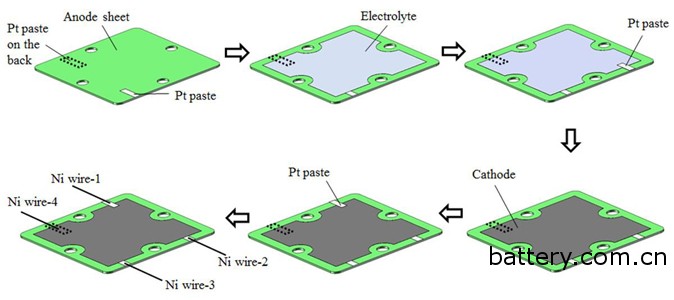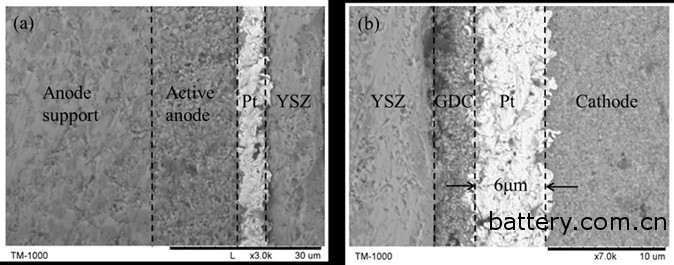Solid oxide fuel cells (SOFCs) appear to have wider application potential and research value in the increasingly urgent situation of smog environmental management. The SOFC cell is mainly composed of a supporting anode, an active anode, an electrolyte and an active cathode, and superior and stable battery performance is a prerequisite for realizing its commercial application. However, for the anode support, the thickness of the supporting anode is about 400 m, the active anode is about 10 m, the electrolyte is about 10 m, and the active cathode is about 30 m. Due to the thickness factor of each component of the battery, the characterization methods commonly used in the industry, such as electrochemical impedance spectroscopy (EIS), make it difficult to distinguish the decisive factors that affect the performance of the battery itself. At the same time, the traditional characterization method can only get the change rule of the overall performance of the battery, and can not quantitatively characterize the contribution of each component, which leads to the bottleneck of the research on battery performance improvement. 
Schematic diagram of three-phase interface ultra-thin lead implantation process

Microstructure of the interface after implantation of ultra-thin measuring leads
The R&D team of the Solid Oxide Fuel Cell of the Institute of Materials Technology and Engineering of the Chinese Academy of Sciences skillfully used the battery preparation process to implant ultra-thin electrodes at the three-phase interface on both sides of the electrolyte, and successfully obtained the full battery with interface measurement leads for the first time. Using the battery, the battery output performance was studied in situ. It was found that the output performance of the battery was determined by the interface performance of the electrode/electrolyte TPB during the operation of the SOFC; the increase of the polarization resistance of the anode side was the main increase of the battery resistance. Source; the output voltage of the battery is more sensitive to ohmic resistance. The results of the study were published online in the form of Full Paper on Advanced Energy Materials (Adv. Energy Mater. doi: 10.1002/aenm.201400120).
This research breaks through the existing battery performance research bottleneck. The composition of the battery voltage and the quantitative contribution of the three-phase interface to the battery performance are observed in situ for the first time. It provides a new technical idea for solving the performance of SOFC interface performance, and also provides battery performance. Improvements in the use of corresponding measures provide a direct experimental basis and reference.

Schematic diagram of three-phase interface ultra-thin lead implantation process

Microstructure of the interface after implantation of ultra-thin measuring leads
Helical Reamer Inserts,Tungsten Carbide Cutting Inserts, Carbide Helical Blades Tool , Hardmetal Helical Reamer Inserts
Zhuzhou Jingfeng Carbide Tools Co., Ltd , https://www.zzjfcarbide.com